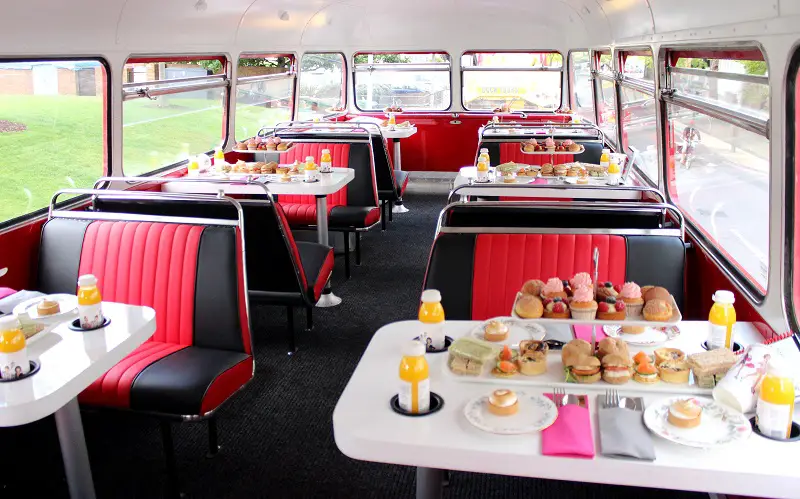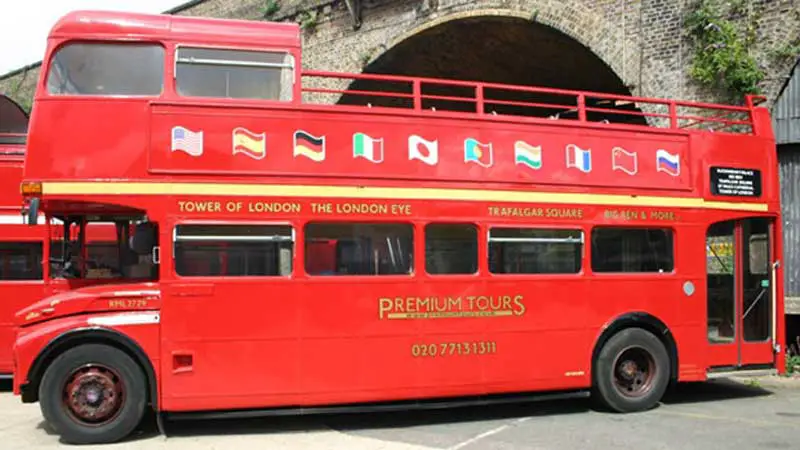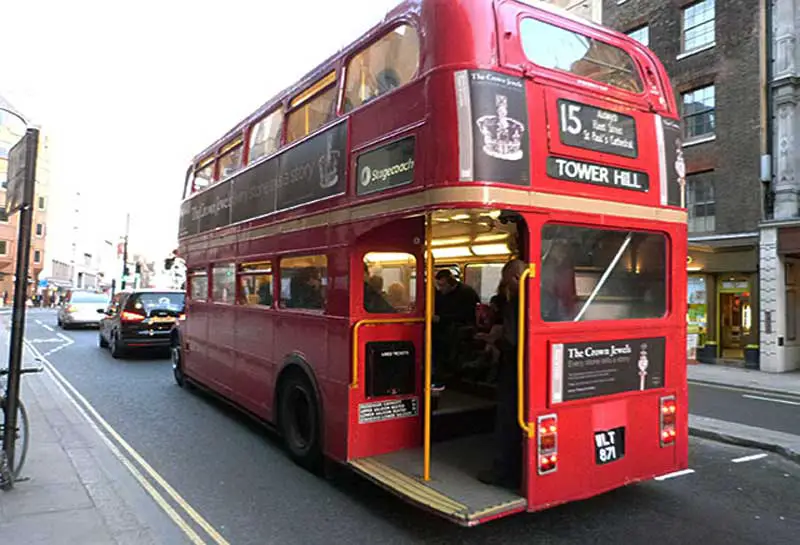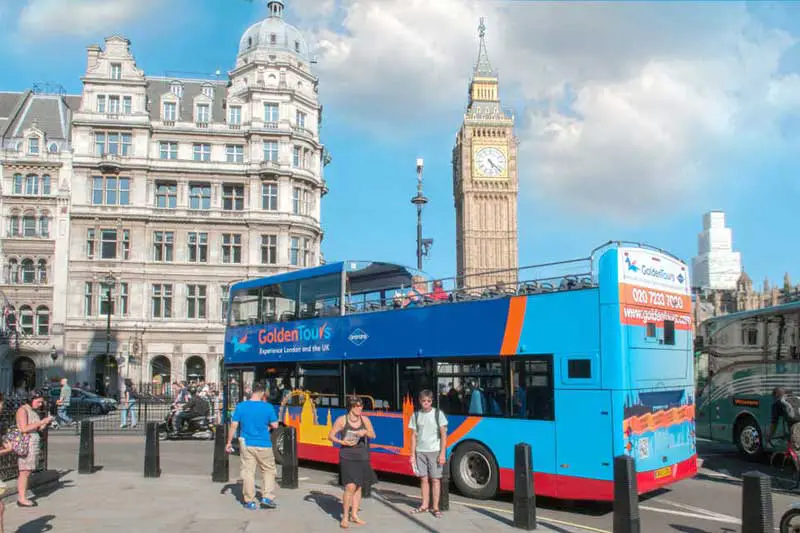The AEC Routemaster London Bus

The original London Routemaster bus, designed in the 1950s especially for the capital, is a style icon, with its simple, classic lines, its famed hop-on-hop-off platform encapsulating London’s rakish sense of spontaneity, urbanity and rebellious lack of respect for queues.
The AEC Routemaster is a front-engined double-decker bus designed by London Transport and built by the Associated Equipment Company (AEC) and Park Royal Vehicles. The first prototype was completed in September 1954 and the last one was delivered in 1968. The layout of the vehicle was traditional for the time, with a half-cab, front-mounted engine and open rear platform, although the coach version was fitted with rear platform doors. Forward entrance vehicles with platform doors were also produced as was a unique front-entrance prototype with the engine mounted transversely at the rear.
The first Routemasters entered service with London Transport in February 1956 and the last were withdrawn from regular service in December 2005, although two heritage routes are still operated by Routemasters in central London. Most Routemasters were built for London Transport, although small numbers were built for British European Airways and the Northern General Transport Company. A total of 2,876 Routemasters were built, of which 1,280 are still in existence.
A pioneering design, the Routemaster outlasted several of its replacement types in London, survived the privatisation of the former London Transport bus operators and was used by other operators around the UK. In modern UK public transport bus operation, the old-fashioned features of the standard Routemaster were both praised and criticised. The open platform, while exposed to the elements, allowed boarding and alighting in places other than official stops; and the presence of a conductor allowed minimal boarding time and optimal security, but with greater labour costs.
Despite the retirement of the original version, the Routemaster has retained iconic status, and is considered a British cultural icon. In 2006, the Routemaster was voted one of Britain’s top 10 design icons which included Concorde, Mini, Supermarine Spitfire, London tube map, World Wide Web and the K2 telephone box. In the late 2000s work began on a New Routemaster bus inspired by the Routemaster’s traditional design. It entered service in February 2012.
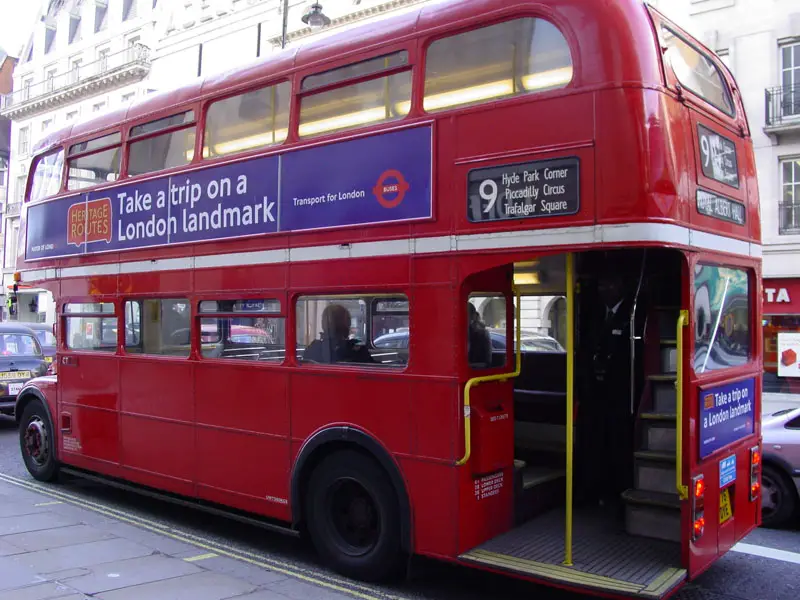
Routemaster London Bus Tours
For many passengers, riding a Routemaster today has little to do with the destinations – despite passing a string of tourist hotspots, and that hotchpotch of roadworks and chain stores, monuments and traffic jams that can be seen from any London bus. For those who grew up in London, the tour is about remembering when, as a child, they would go down to the local shopping area and watch in awe as these giants of the road pulled up before them. They would climb aboard, and Mum would had over a few pennies to the clippie (conductor) whose clickety, hand-cranked machine spat out the tickets. It was then a race up the stairs to the top and sit at the front, grab the railing and watch as the bus seemed to steer itself through the narrow streets. They’d hear the interplay between clippie and driver, or the clippie’s familiar “Only five standing inside, please!”. As their destination neared, they’d climb up onto the seat and tug on the wire bell strung from the ceiling, hear the “ding-ding”, race downstairs, make a bold leap from the open deck, and think, “When I grow up I want to be a bus driver.” It’s an experience Londoners say they miss more than anything they know, and a pleasure many who grew up elsewhere never experienced as children.
There are a number of opportunities to ride an original Routemaster bus around London.
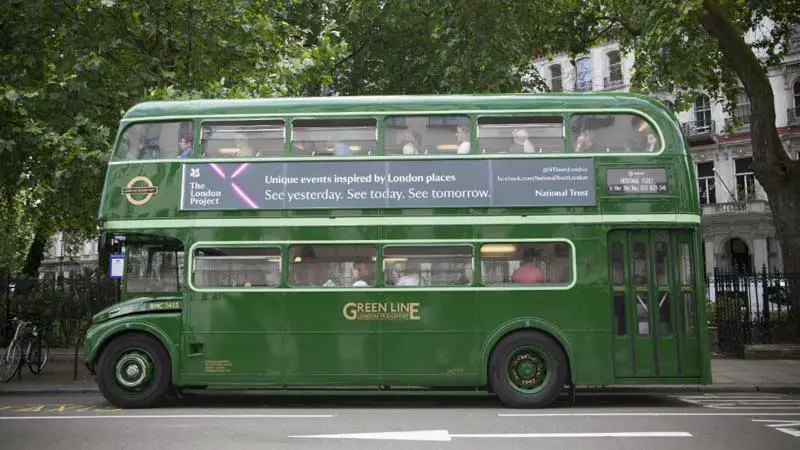
Roadtrips by Routemaster
The National Trust operates ‘Roadtrips by Routemaster’, which are part of a series of events they organise that explore London’s places, their heritage, architecture, and future development. Partnering with some of London’s most interesting people, places and arts institutions, their tours focus on history, architecture, and culture – offering original insight into what makes our capital city so distinctive. Their carefully selected guides boast diverse interests and expertise, meaning you’ll be sure to encounter London in a new and unexpected way.
They use restored Routemaster buses that have been returned to their original green livery. A typical tour takes three to six hours, and I say that because each tour is unique and won’t always follow the format or route. You’ll need to check individual listings when they become available for information relating to each tour. Every excusion is led by at least one expert guide. Passengers are provided with an information pack about the subject of the tour. All the way are offers of entry to sites of interest not normally accessible to the public.
Included is the use of individual audio equipment, so you hear your guide perfectly. All tours include a refreshment break.
Design by W3layouts

